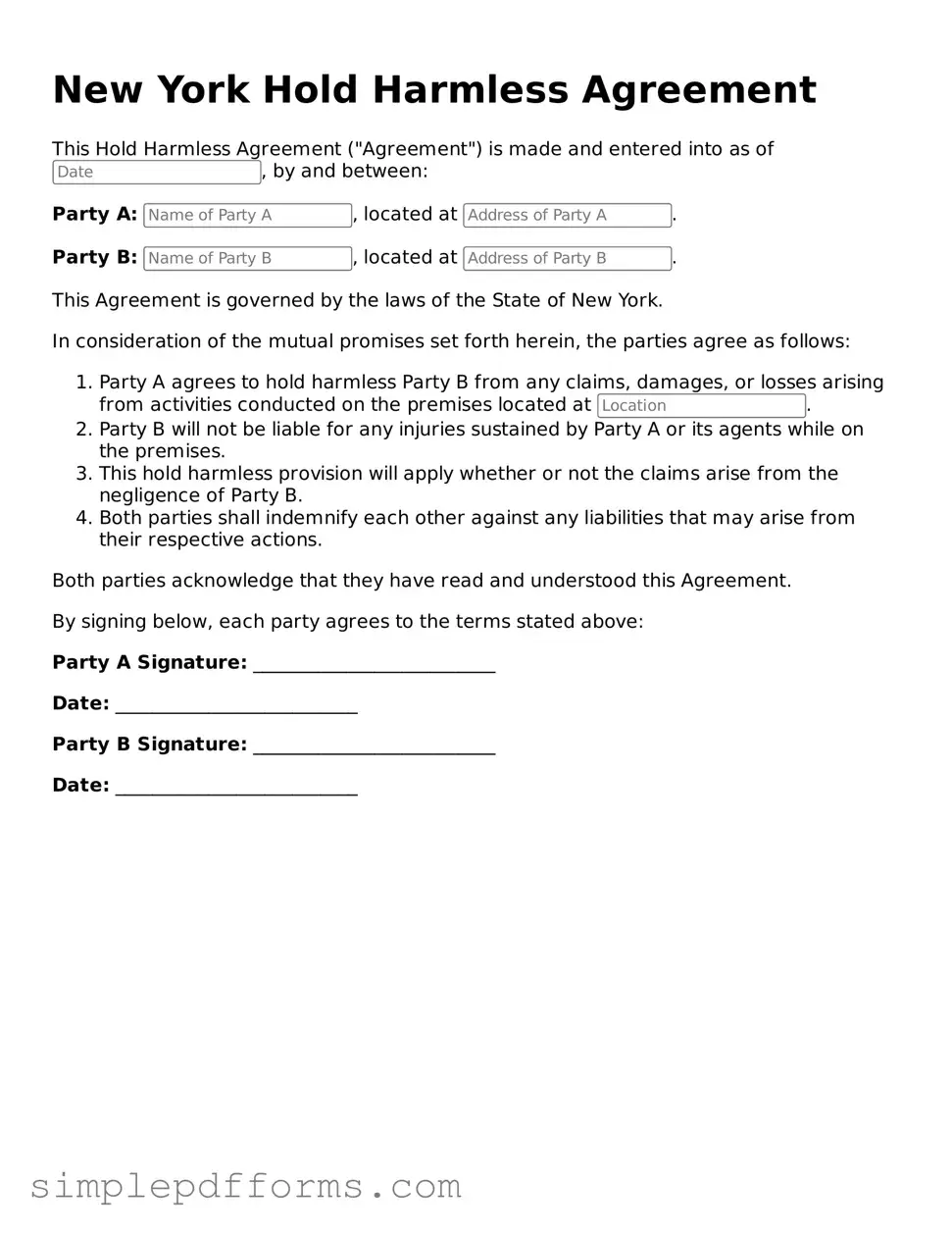When filling out the New York Hold Harmless Agreement form, individuals often overlook critical details that can lead to complications later on. One common mistake is failing to read the entire document thoroughly. This agreement is not just a formality; it carries significant legal implications. By skimming the text, individuals may miss important clauses that outline their rights and responsibilities.
Another frequent error involves incorrect or incomplete information. People sometimes rush through the process, neglecting to provide essential details such as names, dates, or specific descriptions of the activities covered by the agreement. This can render the form ineffective or even void. Ensuring accuracy in every section is crucial for the document's validity.
Additionally, many individuals neglect to understand the scope of the agreement. The Hold Harmless Agreement is designed to protect one party from legal liability due to the actions of another. However, if the terms are too broad or vague, it can lead to confusion about what is actually being covered. Clarity is key, so defining the scope precisely is vital.
People often forget to consult with a legal professional before signing. While it may seem unnecessary, having an expert review the agreement can provide insights that are easily overlooked. Legal jargon can be complex, and a professional can clarify any confusing terms or conditions, ensuring that the signer fully understands their obligations.
Another common mistake is not considering the duration of the agreement. Some individuals may assume that the agreement is valid indefinitely, but many hold harmless agreements are time-sensitive. Specifying the duration of the agreement can prevent misunderstandings in the future.
Moreover, individuals frequently fail to sign and date the agreement properly. A missing signature or date can invalidate the entire document. It’s essential to ensure that all required signatures are present and that the date reflects when the agreement was executed.
In addition, people sometimes overlook the importance of witnesses or notarization. Depending on the context, having a witness or a notary public can add an extra layer of protection and legitimacy to the agreement. Neglecting this step can lead to disputes about the authenticity of the signatures.
Another mistake involves not keeping a copy of the signed agreement. After the form is filled out and submitted, it’s easy to forget about it. However, retaining a copy is crucial for future reference and can help resolve any potential disputes that may arise.
Lastly, individuals may misjudge the necessity of the Hold Harmless Agreement altogether. Some may believe it is optional or irrelevant, especially in informal situations. However, even in casual arrangements, having a hold harmless agreement can provide peace of mind and protect against unforeseen liabilities.
By being aware of these common pitfalls, individuals can approach the New York Hold Harmless Agreement with greater confidence and clarity. Taking the time to understand the form and its implications is a proactive step toward safeguarding one’s interests.
